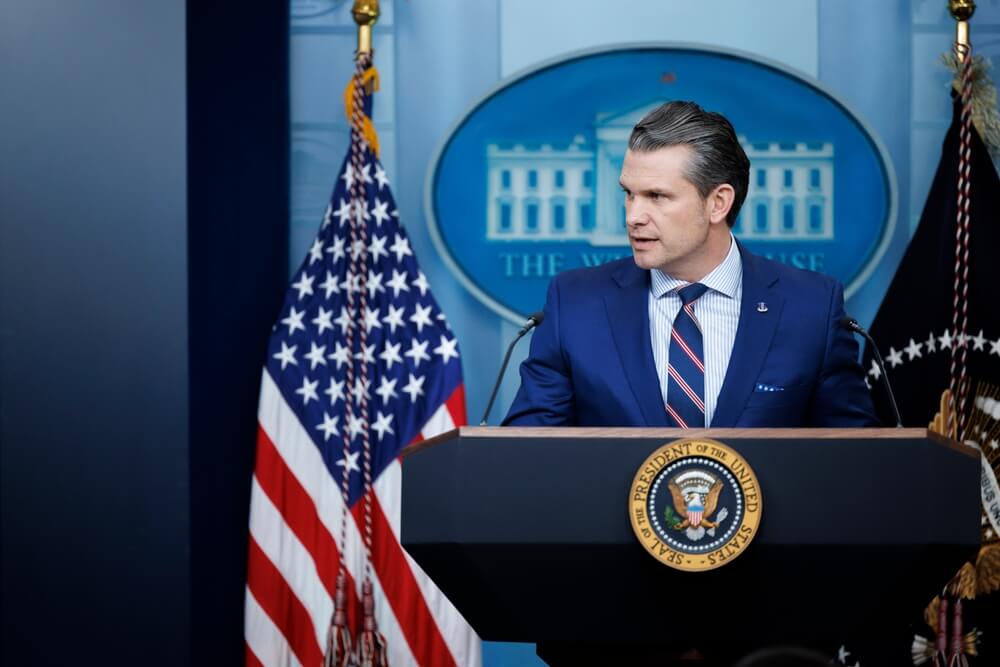The Europeans do not feel comfortable when someone from the top of the American administration comes to them for a meeting on joint security.
Last time, in Munich in February, US Vice President JD Vance caused an earthquake with a series of rebukes to European allies that were considered a rejection by Europe's biggest security ally.
However, the NATO ministerial meeting in Brussels brought calm, or at least the appearance of calm. This was ensured by US Secretary of State Marco Rubio, who went to great lengths to reassure the partners that the USA and President Trump remain loyal to the alliance of which they are a pillar.
“President Trump’s made clear he supports NATO. We’re going to remain in NATO. We want NATO to be stronger, we want NATO to be more visible,” Secretary Rubio told reporters at NATO headquarters.
He labelled the global and American media’s previous assessments of the fact that the US has been distancing itself from its partners and from NATO as a whole as "hysteria and hyperbole."
But it was not just the media comments that Secratary Rubio was referring to but also the concerned attitudes of the majority of NATO member governments since President Trump took office.
Moreover, their conviction that the new administration in Washington was rapidly dismantling the transatlantic ties was so strong that it prompted a series of high-level emergency meetings and plans for an urgent adjustment to the new security reality.
Good cop
Rubio's strong words should have been a clear confirmation to the rest of NATO that things are different and that America's commitment to strengthening NATO is undeniable.
After the Munich episode with JD Vance, Marco Rubio appeared to the allies as a "good cop," emphatically softening the perception of Washington's scepticism towards NATO and the allies.
What's more, he has used his reputation of a strong supporter of transatlantic security relations and NATO's role in this goal as one of the most pro-alliance individuals at the top of the Trump administration.
Rubio's message that the US expects its partners to raise their security budgets to 5% of GDP is confirmation that the Trump presidency will persist with this demand
But will this be sufficient for European partners and Canada to feel a sense of relief and at least contemplate reducing the alert level?
Rubio's message that the US expects its partners to raise their security budgets to 5% of GDP was long overdue and is now only confirmation that the Trump presidency will persist with this demand.
Trade war and the 5% target
This target also applies to the USA, which currently spends around 3.4% of its GDP on defence. The Europeans and Canada have no reason to see this demand as some kind of American threat but rather a joint commitment that the US will also strive to fulfil.
The European allies are still struggling to fulfil Trump's demands from his last term in office because they have not yet reached the 2% GDP threshold proclaimed at the time.
Last year, 23 of the 32 NATO member states achieved this threshold. Only a few members of the alliance—Poland, Greece, and two Baltic states—are still in the zone of more than 3% GDP, which NATO Secretary-General Mark Rutte favours as an intermediate step.
But as much as there is agreement on the need for higher defence spending, this area is directly linked to the economic plans and ambitions of NATO member states. And this is where cracks are already forming, due to Washington's moves.
Europeans moving towards higher defence spending will be faster because of the cooling of security relations with Washington
Marco Rubio arrived in Brussels on the same day after President Trump’s long-announced list of import tariffs, which includes all European NATO member states as well as Canada.
The impact of this decision, regardless of the different interpretations of its justification, will not benefit reaching the 5% threshold, as it will shift the focus to the trade aspects of the alliance.
Moreover, Europeans moving towards higher defence spending will be faster because of the cooling of security relations with Washington. The ReArm Europe strategy presented by the EU in mid-March has a volume of EUR 800 billion and is the first major reaction to the announcements by Trump and his administration to initiate a shift in security policy towards Europe.
Division over Ukraine
However, the NATO ministerial meeting and even the reassuring messages from the US Secretary of State will not bring about any significant change in the divided positions of the allies regarding Ukraine and Russia.
This is another reason for the reluctance that American partners will continue to have, given that Washington does not share their commitment to helping Kyiv and particularly the wariness of further aggressive actions by Moscow if the West gives in to it over Ukraine.
 Pete Hegseth will not come to Brussels on 11 April for the next meeting of the 50 countries coordinating military aid for Kyiv
Pete Hegseth will not come to Brussels on 11 April for the next meeting of the 50 countries coordinating military aid for Kyiv
The announcement that US Secretary of Defence Pete Hegseth will not come to Brussels on 11 April for the next meeting of the 50 countries coordinating military aid for Kyiv also shows that this division will remain.
This will be the first time in three years that the American representative will not take part in the work of the coalition for military assistance to Ukraine, of which it was the initiator and most influential member.
All this indicates that the Alliance will still have many unresolved internal issues before the NATO summit in The Hague in June and that the path to its full effectiveness and unity is still being sought.